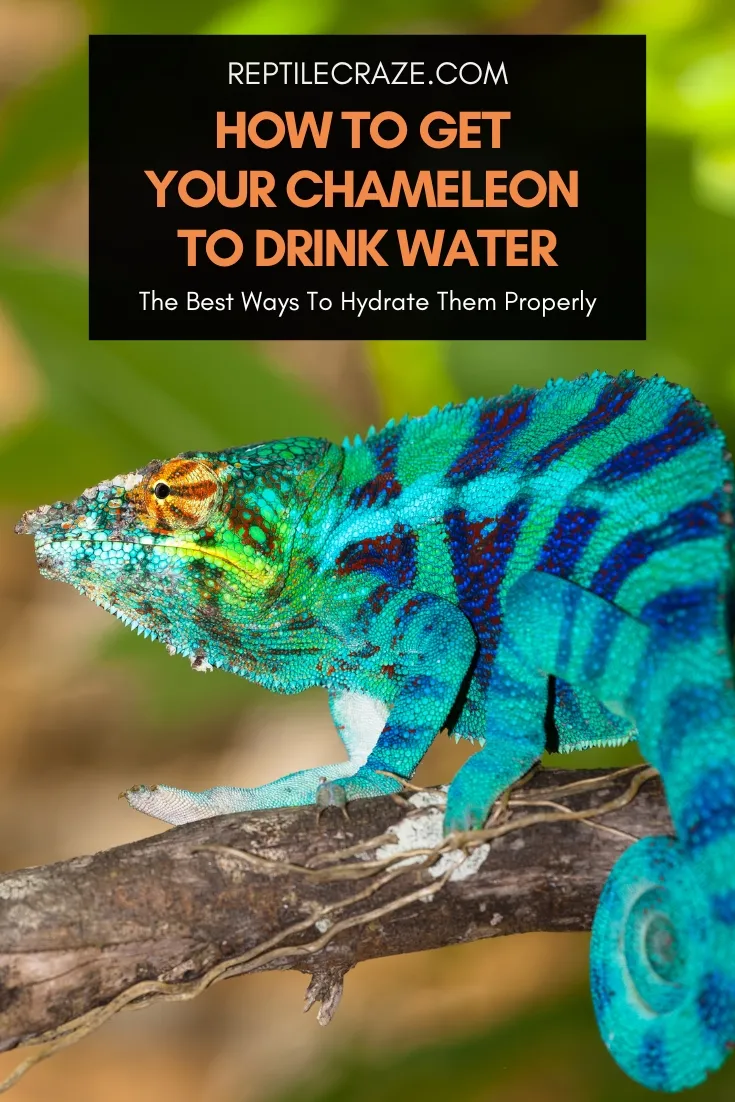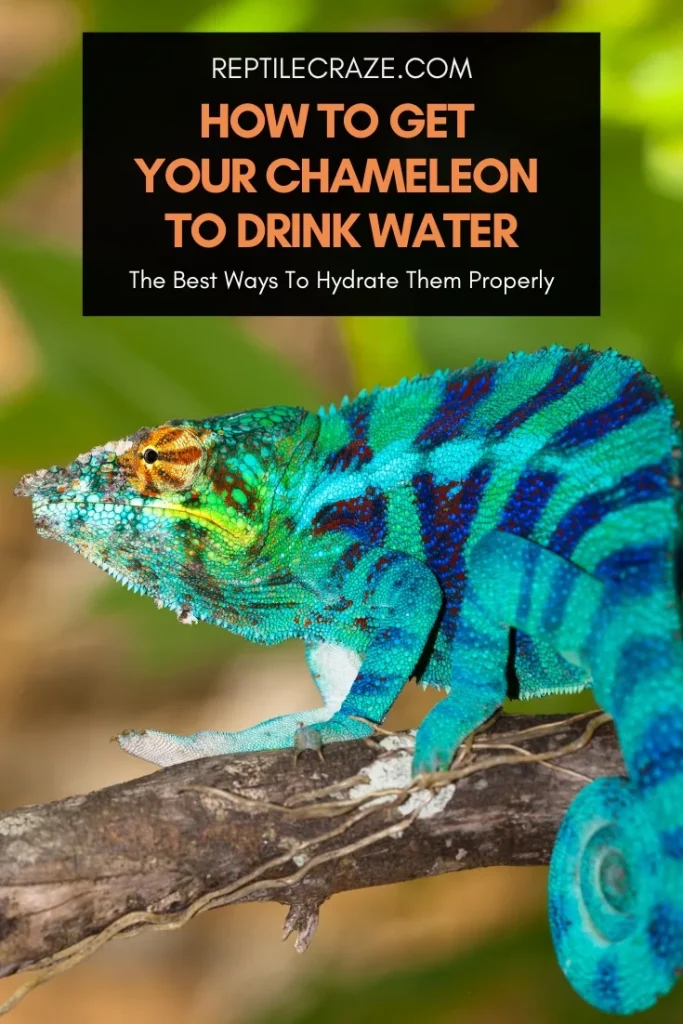Chameleons are fascinating creatures that can change their color and blend into their surroundings. However, they have unique hydration needs that require special care. Dehydration can be a serious issue for a chameleon, and proper rehydration can mean the difference between life and death.
In this guide, we will explore the various methods of rehydrating a chameleon, including the use of a misting system, a drip system, and a water dish. We will also discuss the signs of dehydration to look out for and how to prevent it from happening in the first place. By the end of this article, you will have a thorough understanding of how to keep your chameleon healthy and hydrated.
- Get a shallow dish and fill it with lukewarm water.
- Place your chameleon in the dish and let it soak for 10-15 minutes.
- During the soaking, gently mist your chameleon’s skin with water to help it rehydrate.
- After 15 minutes, remove your chameleon from the dish and dry it off with a soft towel.
- Repeat this process daily until your chameleon is fully hydrated.

How to Rehydrate a Chameleon?
As a chameleon owner, it is important to understand the signs and symptoms of dehydration in your pet. Dehydration can be a serious condition that can lead to organ failure, and even death, if left untreated. Fortunately, there are several steps you can take to rehydrate your chameleon and prevent dehydration in the future.
Identifying Dehydration in Chameleons
The first step in rehydrating a chameleon is to identify the symptoms of dehydration. Chameleons are known for their ability to change color, but this can make it difficult to detect dehydration. Some common signs of dehydration in chameleons include sunken eyes, wrinkled skin, lethargy, and decreased appetite. If you notice any of these symptoms, it is important to take action immediately.
To determine the severity of your chameleon’s dehydration, you can perform a skin tent test. Gently pinch the skin on the back of your chameleon’s neck and hold it for a few seconds. If the skin snaps back into place quickly, your chameleon is likely well hydrated. If the skin takes longer to return to its normal position or remains tented, your chameleon may be dehydrated.
Rehydrating a Chameleon
Once you have identified that your chameleon is dehydrated, there are several steps you can take to rehydrate them. The first step is to provide a source of clean, fresh water. Chameleons prefer to drink water droplets from leaves, so misting their enclosure several times a day can help to encourage them to drink.
In addition to misting, you can also provide a dripper or fountain to give your chameleon access to running water. This can be especially helpful for chameleons that are reluctant to drink from a water dish.
If your chameleon is severely dehydrated, you may need to administer fluids subcutaneously (under the skin) or intravenously (through a vein). This should only be done by a veterinarian or experienced reptile keeper.
Preventing Dehydration in Chameleons
Preventing dehydration in chameleons is key to keeping your pet healthy and happy. Some ways to prevent dehydration include providing a humid environment, offering a variety of fresh fruits and vegetables, and ensuring that your chameleon has access to clean water at all times.
It is also important to monitor your chameleon’s hydration levels regularly. You can do this by observing their behavior and appearance, as well as performing regular skin tent tests.
The Benefits of Proper Hydration for Chameleons
Proper hydration is essential for maintaining your chameleon’s overall health and well-being. When chameleons are dehydrated, their organs can begin to shut down, leading to serious health problems.
In addition to preventing illness and disease, proper hydration can also help to improve your chameleon’s skin and coloration. Chameleons that are well hydrated tend to have brighter, more vibrant colors and healthier skin.
Rehydration vs. Overhydration in Chameleons
While it is important to keep your chameleon well hydrated, it is equally important not to overhydrate them. Overhydration can lead to waterlogged lungs, which can be fatal.
To prevent overhydration, it is important to monitor your chameleon’s water intake and to avoid soaking them in water for extended periods of time.
Conclusion
Rehydrating a chameleon is an important part of caring for your pet. By identifying the signs of dehydration, providing a source of clean water, and taking steps to prevent dehydration in the future, you can help to keep your chameleon healthy and thriving. Remember to monitor your chameleon’s hydration levels regularly and to seek veterinary assistance if you suspect that your pet is severely dehydrated.
Frequently Asked Questions
Chameleons are unique animals that require proper care and attention. One of the most important aspects of caring for a chameleon is ensuring that it stays hydrated. Here are some frequently asked questions about how to rehydrate a chameleon.
What are the signs of dehydration in a chameleon?
Dehydration is a serious condition that can be fatal for chameleons. Some common signs of dehydration in a chameleon include sunken eyes, wrinkled skin, lethargy, loss of appetite, and dark urine. If you notice any of these symptoms, it is important to take action immediately to rehydrate your chameleon.
The first step is to offer your chameleon a source of water, such as a misting system or a dripping water bottle. You may also want to add a humidifier to the chameleon’s enclosure to increase the humidity levels. If your chameleon does not respond to these measures, it is important to consult a veterinarian immediately.
How often should I mist my chameleon?
Misting is an important part of keeping your chameleon hydrated, but it is important to do it correctly. You should mist your chameleon at least twice a day, and more often if you live in a dry climate or if your chameleon is showing signs of dehydration. When misting, make sure to use room temperature water and avoid spraying directly on the chameleon’s face.
In addition to misting, you can also offer your chameleon a dripping water source or a small water bowl. It is important to change the water regularly to prevent bacteria growth and ensure that your chameleon has access to clean water at all times.
Can I use a water bowl to rehydrate my chameleon?
While water bowls can be a source of hydration for chameleons, they are not the most effective way to rehydrate a dehydrated chameleon. Chameleons are arboreal animals and are more likely to drink water droplets from leaves or other surfaces. However, it is still important to offer a water bowl in the enclosure, as it can provide a secondary source of hydration.
If you suspect that your chameleon is dehydrated, it is important to provide a more direct source of hydration, such as misting or a dripping water source. You may also want to consult a veterinarian to ensure that your chameleon receives the proper care.
What should I do if my chameleon is not drinking water?
If your chameleon is not drinking water, it may be a sign of dehydration or an underlying health issue. The first step is to ensure that your chameleon has access to clean water at all times. You can also try misting the enclosure more frequently or offering a dripping water source.
If your chameleon is still not drinking water, it is important to consult a veterinarian. Dehydration can be a serious condition that can lead to organ failure and other health complications. A veterinarian can provide a proper diagnosis and treatment plan to ensure that your chameleon stays healthy and hydrated.
What can I do to prevent dehydration in my chameleon?
Preventing dehydration in a chameleon starts with proper care and attention. Make sure to provide a clean and well-maintained enclosure with plenty of climbing and hiding spaces. Misting the enclosure regularly and offering a dripping water source can also help to keep your chameleon hydrated.
It is also important to monitor your chameleon’s behavior and appearance for any signs of dehydration. If you notice any symptoms, take immediate action to rehydrate your chameleon. Regular check-ups with a veterinarian can also help to ensure that your chameleon stays healthy and hydrated.
How to force hydrate a chameleon
In conclusion, rehydrating a chameleon is a crucial aspect of its overall health and well-being. By providing the right amount of water and ensuring that its environment is conducive to hydration, you can help prevent dehydration and keep your pet chameleon healthy.
Remember to monitor your chameleon’s water intake and provide fresh water daily. Pay attention to signs of dehydration such as sunken eyes and wrinkled skin, and take immediate action to rehydrate your chameleon if necessary.
By following these simple steps, you can ensure that your chameleon stays healthy and happy for years to come. So, go ahead and give your chameleon the gift of hydration today!


